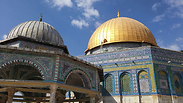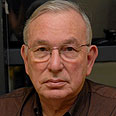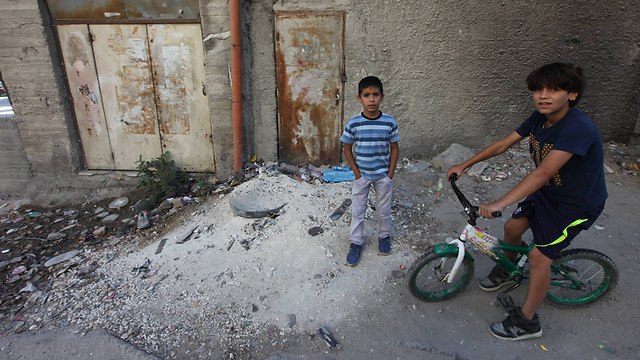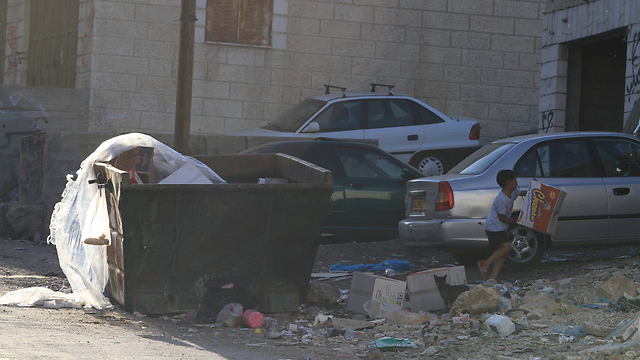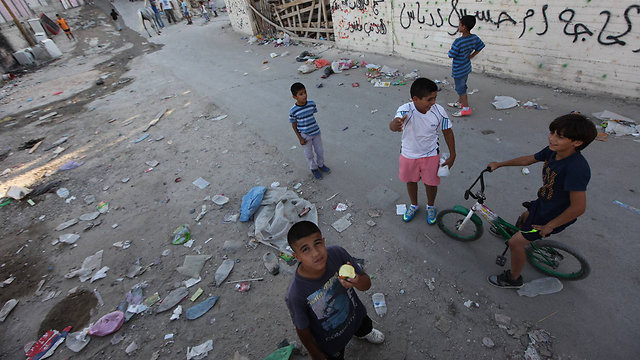Presumably, the unrest in Jerusalem will soon subside. The law enforcement authorities will turn the screws and deter the rioters. The rain will douse the flames, but the embers will still remain. A few months will go by and again the smoldering coals will reignite. A few Jews and Arabs will be murdered, the security forces will clamp down again, and the cycle will continue. This is the optimistic script for the future of the capital, which is serving as a laboratory for testing the concept of annexation.
The experiment has been underway for half a century. The representative sample encompasses a large proportion of Israel's residents, and the numerical ratio between the Jews and the Arabs living in the city corresponds with the demographic reality that prevails in the expanse between the Jordan River and the Mediterranean Sea.
The measures of control employed in Jerusalem are similar to those that the proponents of annexation believe should be implemented throughout the country: The Arabs will be afforded the status of permanent residents, without citizenship rights that facilitate participation in government. One has to, therefore, make the following inference: Events in the now-united capital foretell of the future that lies ahead in the single state that the annexation proponents are wishing to see established.
The unification and expansion of the capital was the decision of Levi Eshkol's government, almost all the ministers of which were secular individuals; bubbling deep down in their hearts, however, was a messianic vision that also came to the fore in Biblical rhetoric. The physical Jerusalem merged with an imaginary location, with the Temple Mount at his heart, from which world peace would emanate - "And the wolf shall dwell with the lamb, and the leopard shall lie down with the kid." The first 50 years, however, are bringing us closer to a catastrophe of global proportions than to the realization of Isaiah's prophecy. It would take just one madman, with the help of a bomb, to hasten the onset of the vision of the Temple Institute supporters.
The immense metropolis, designed in careless haste, was supposed to have served as an example of enlightened Israeli rule that could cater to a large minority and uphold a peaceful existence for the two communities side by side. And this illusion was strengthened further with the help of Ze'ev Jabotinsky's teachings, which combine the notion of a liberal state with a national Jewish homeland that extends to both banks of the Jordan River.
A few decent people still hold this view. They truly believe the words of Jabotinsky's poem, The East of the Jordan, in which he wrote: "From the wealth of our land there shall prosper / The Arab, the Christian, and the Jew / For our flag is a pure and just one." Insofar as purity and justness are concerned, we've failed miserably. And the moral failure is concurrent with a political one, even from the perspective of the sane right.
Purity and justness are reflected, first and foremost, in the fair distribution of resources. Political logic requires this too, because a huge economic gap between two intermingled communities ensures constant tension. If the ruling majority is not willing to sacrifice a large proportion of its resources to meet this difficult challenge, it would be well advised to withdraw from the task and part ways with the minority. Teddy Kollek, the first mayor of the united city, internalized the first part of the sentence but not the second. During his extended term in office, only a small fraction of the municipal budget was allocated to the Arabs, who already made up about a quarter of the city's residents. Today, 12 percent at most of the municipal budget goes to the Arab population, which is growing at lightning speed.
In the year in which the city was "united," the ratio of Jews to Arabs stood at 74:26. Today, it stands at around 63:37.
Despite the state's huge financial investment in the development of its capital, despite the high birth rates of the Jewish population, more than half of which is ultra-Orthodox or religious, despite the systematic discrimination of the Arab population, despite the regulations designed to exile as many Arabs as possible from their city of residence,
despite all this, the dry and emotionless statistical tables teach us that since Jerusalem's unification and up until today, just a single year has deviated ever-so slightly from the insistent demographic trend.
It's safe to assume that in 25 years' time, the ratio between the populations will resemble the ratio in place a few years after the Balfour Declaration: Approximately half the residents of the capital of the state of the Jewish people will be Arabs. Thus, within just a single generation, we'll be back at square one.













